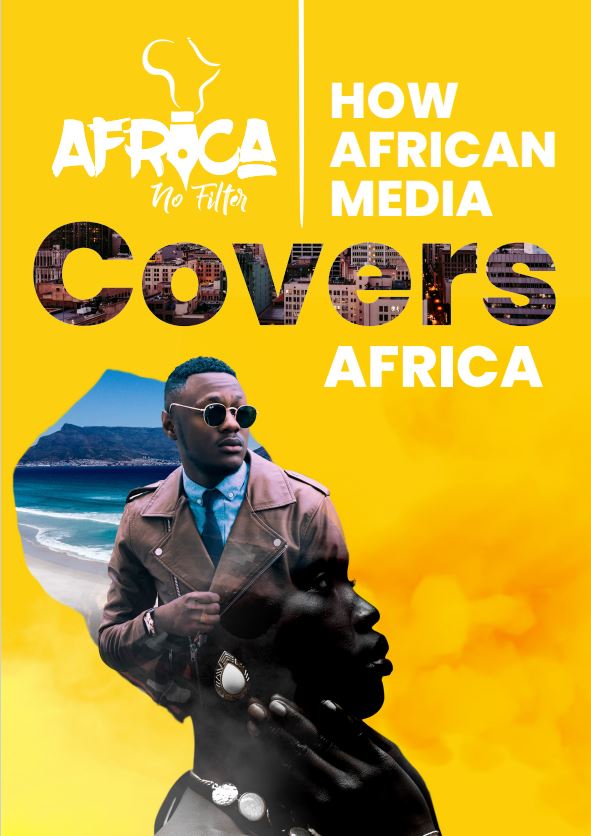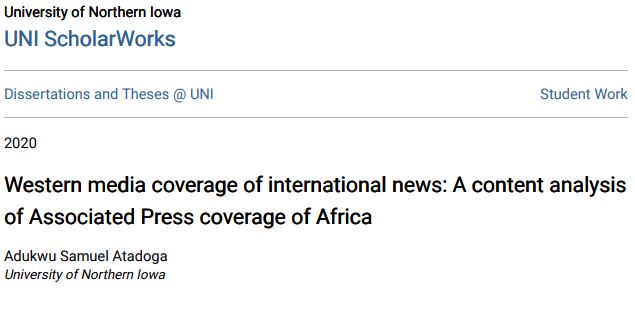In the diverse landscape of global news, Africa often finds itself relegated to the sidelines, especially within the Danish media. Even with its diverse range of biodiversity, cultures, and political environments, Africa’s presence in Danish media is still disproportionately minimal.
The African population makes up almost a fifth of the world’s population and is expected to increase. Still, news about the African continent, its culture, people, and politics, only make up a significant small part of Danish news, even with major things happening.
Last year in August, I found myself deeply engaged with the situation in Zimbabwe. I work at the Danish NGO Nunca Mas, where we manage several projects in the Global South, one of them being in Zimbabwe. The country held critical elections at that time, and as our partners in Zimbabwe told us about the events, I was shocked by the conditions surrounding the elections. Reports of inconsistencies, fake information, violence, and political tensions painted an unfavorable picture of the electoral process. In an attempt to learn and understand more, I turned to Google in search of comprehensive coverage, however, I encountered difficulties in finding relevant news articles. The lack of information was striking, and if it had not been for the updates from our partners present in Zimbabwe, I could have remained unaware of the severity of the situation unfolding in the country.
Experiences in the field as either journalist or working with an NGO
On Monday, March 11th, CISU, in cooperation with Globalnyt and Nairobi-klubben (The Nairobi Club) hosted an event focusing on the issue titled “AFRICA: Global giant – miniput in the media. Why does Africa take up so little space in the media and public debate” (translated from Danish: AFRIKA: Global gigant – miniput i medierne. Hvorfor fylder Afrika så lidt i medierne og den offentlige debat?)
At the event, there were four speakers: 1) Christina Nordvang Jensen, a journalist who has been writing regularly about Africa in the daily newspaper Information, 2) Gerd Kieffer-Døssing, a journalist with a degree in African studies, who has been living in Senegal, 3) Kasper Bøgsted Kristensen, a journalist with a degree African studies, now working for the Danish Red Cross, and 4) Cecilie Hauerberg, CEO of FANT (For a new tomorrow).
All four of them addressed the lack of coverage of Africa in the Danish media, based on their own experiences in the field as either journalists or working with an NGO. There was a consensus on the actuality of the problem and the fact that change needs to happen. Following the presentations of the four speakers, there was a panel discussion involving the audience. One audience member pointed out that the lack of coverage could be rooted in structural problems in the Danish media industry. There is an apparent lack of diversity in the Danish media landscape, particularly when it comes to representing various ethnic backgrounds. The workforce of the media industry is primarily composed of white middle-class individuals, leading to a limited range of perspectives, experiences, and opinions.
This homogeneity extends to coverage priorities, with stories concerning Africa often failing to garner attention or priority. In this homogenized environment, the number of journalists with a special interest in Africa is relatively small, and the nuances and complexities of African societies and cultures are often overlooked. Even when journalists with a genuine interest in Africa are present, editorial decisions frequently prioritize other countries and topics over African affairs, which results in minimal coverage and limited depth in reporting on African issues.
This situation often arises due to a lack of resources, but it is also a matter of prioritization. Editors could opt to allocate fewer resources and journalists covering Europe and assign more to cover Africa. However, at the event, no editors were present, although it would have been interesting to hear their perspectives on why Africa is prioritized in the manner it is.
It appears though, that when resources are available, there is indeed an interest in reporting on Africa. With Christina Nordvang Jensen working at Information and making an effort to put Africa on the agenda, the newspaper initiated a project to communicate knowledge about climate change and climate-induced struggles as well as potentials on the African continent to a Danish audience. The project called “Africa’s Green Fight” (translated from Danish: Afrikas grønne kamp) is a CISU-funded project, consisting of a series of articles on how climate change affects life on the African continent and how we contribute to this change. With this project, Information leads the way in the right direction, however, there is a risk that when the project ends, along with its accompanying resources, coverage of articles on Africa may again be reduced.
Danish NGO’s role in shaping a narrative
Also discussed at the event was the significant role played by Danish NGOs in shaping the narrative around Africa. With the media’s limited coverage, NGOs often become the primary source of information for the Danish population regarding African affairs. This monopoly over information dissemination comes with its own set of consequences, which Kasper Bøgsted Kristensen highlighted in his presentation. To attract donations and funding, NGOs often present a negative portrayal of Africa, focusing predominantly on issues such as poverty, starvation, and dependency. This one-dimensional narrative not only perpetuates stereotypes but also undermines the agency and resilience of African populations.
I recently came across “The Danger of a Single Story” presented by Nigerian writer Chimamanda Ngozi Adichie in her Ted Talk. The single story refers to a one-dimensional perspective of something that, in reality, is bigger and more complex than that single story.
The consequence of the single story is that “It robs people of dignity. It makes our recognition of our equal humanity difficult. It emphasizes how we are different rather than how we are similar.” Adichie emphasizes this by saying: “If I had not grown up in Nigeria, and if all I knew about Africa were from popular images, I too would think that Africa was a place of beautiful landscapes, beautiful animals, and incomprehensible people, fighting senseless wars, dying of poverty and AIDS, unable to speak for themselves and waiting to be saved by a kind, white foreigner.”
The perpetuation of negative stereotypes by Danish NGOs not only impacts public perceptions but also has tangible consequences for Africa. By framing Africa solely within the context of poverty and need, NGOs risk reinforcing a narrative of victimhood, and Africa as a passive recipient of aid, thereby diminishing the continent’s vibrant history and culture and undermining efforts towards sustainable development and self-determination.
The path forward
To change the negative perception manifested in the public eye due to the discourse shaped by NGOs, Danish media outlets must take proactive steps to increase coverage of Africa, providing a more nuanced portrayal of the continent. Africa’s limited presence in Danish media should not be seen as a reflection of its importance or relevance. The Danish media industry needs to foster diversity not only regarding coverage priorities but also within workplaces in order to promote inclusion and representation, contributing to a more nuanced understanding of global affairs. Without the editorial perspective, there probably lies no obvious or perfect solution at hand, but one suggestion from Gerd Kieffer-Døssing during the panel discussion was quotas. These could apply to both employees within the industry as well as the number of articles published about a specific country within a specific period of time. Although it can be argued that the readers decide – what they are interested in will be printed. It is therefore important to emphasize the potential that a nuanced and comprehensive understanding of Africa could have on the public. Although, in order to provide this nuanced understanding to the public, we must start with the media.
Christina Nordvang Jensen mentioned something equivalent to that. She declared that it depends on how you tell a story, and if you find the right angle then that also arouses interest in the readers. When writing an article, she focuses on using genuine local sources and getting a nuanced perspective, rather than a Danish perspective with Danish sources. However, both Nordvang Jensen, as well as Kieffer Døssing, experience that the Danish media always want to know the Danish angle, which is very comparable to the single story theory mentioned earlier, as always providing articles with a Danish angle will keep the public from seeing different angles and learning about Africa from a different perspective.
Ultimately, it can be concluded that there lies a long road ahead where the Danish media industry can play a pivotal role in shaping a more nuanced and inclusive narrative of Africa for the public and contribute to not only giving them the single story.
Carla Grahl is a financial controller with Nunca Mas
Does Africa get the media coverage it deserves?
Telling Africa’s stories: Giving the right context to coverage







